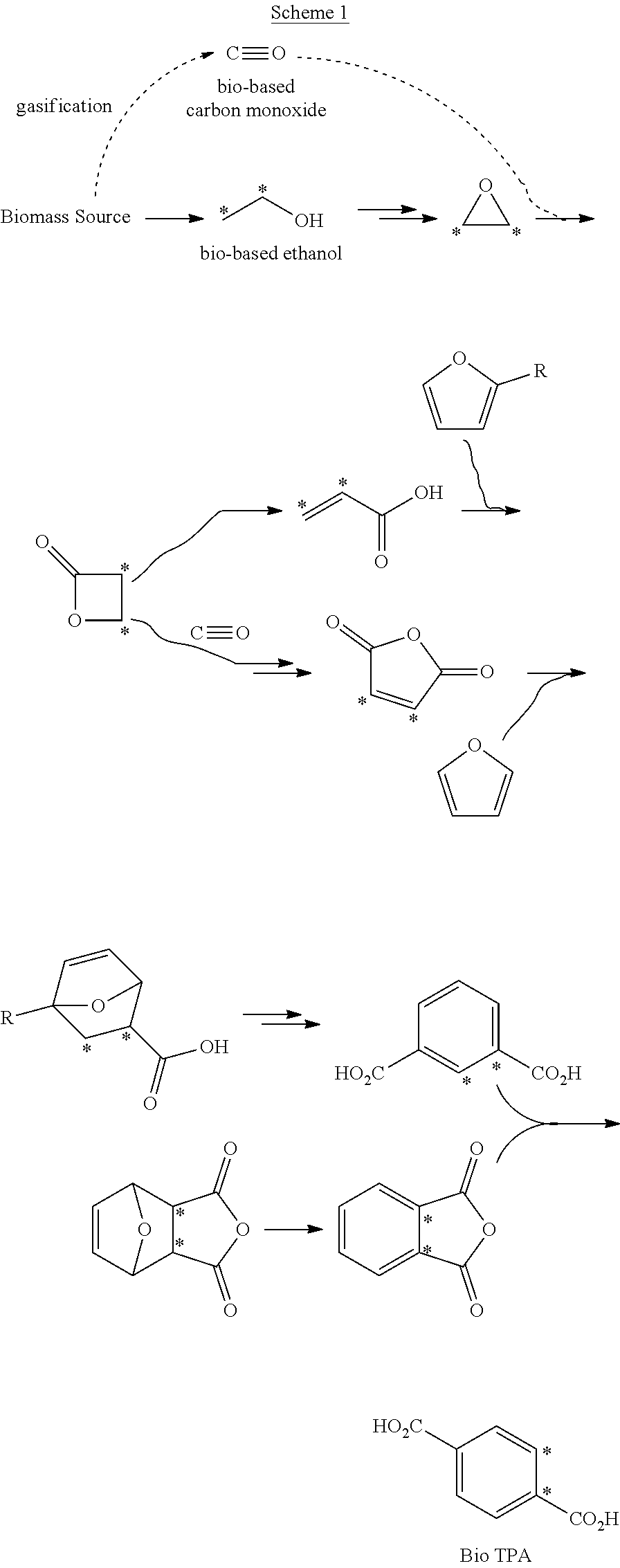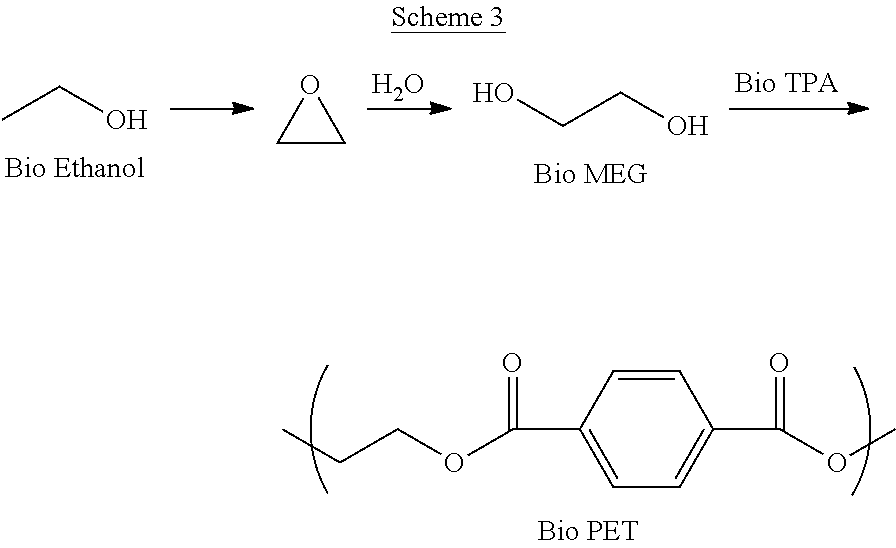Processes for the production of terephthalate derivatives and compositions thereof
- Summary
- Abstract
- Description
- Claims
- Application Information
AI Technical Summary
Benefits of technology
Problems solved by technology
Method used
Image
Examples
Embodiment Construction
Conversion Schemes
[0022]Schemes 1-3 below depict exemplary conversion schemes for preparing composition described herein.
[0023]Scheme 1 depicts conversions including that of ethanol to ethylene oxide, beta propiolactone, acrylic acid and / or maleic anhydride, and terephthalic acid (i.e., bio TPA) via, for example, the known Henkel process.
[0024]Scheme 2 depicts the conversion of bio TPA to DMTA and / or bis(2-hydroxyethyl)terephthalate.
[0025]Scheme 3 depicts the conversion of ethanol to ethylene oxide and monoethylene glycol (MEG), which is combined with bio-TPA to make bio-PET.
[0026]Methods of making beta propiolactone from the carbonylation of ethylene oxide are known in the art and include those described in WO 2013 / 063191 and WO 2014 / 004858.
[0027]Methods of making succinic anhydride from the carbonylation of ethylene oxide are known in the art and include those described in WO 2012 / 030619 and WO 2013 / 122905. Succinic anhydride is oxidized to maleic anhydride by known methods.
[0028]...
PUM
| Property | Measurement | Unit |
|---|---|---|
| relative molecular mass | aaaaa | aaaaa |
| accelerator mass spectrometry | aaaaa | aaaaa |
| liquid scintillation counting | aaaaa | aaaaa |
Abstract
Description
Claims
Application Information
 Login to View More
Login to View More - R&D
- Intellectual Property
- Life Sciences
- Materials
- Tech Scout
- Unparalleled Data Quality
- Higher Quality Content
- 60% Fewer Hallucinations
Browse by: Latest US Patents, China's latest patents, Technical Efficacy Thesaurus, Application Domain, Technology Topic, Popular Technical Reports.
© 2025 PatSnap. All rights reserved.Legal|Privacy policy|Modern Slavery Act Transparency Statement|Sitemap|About US| Contact US: help@patsnap.com



